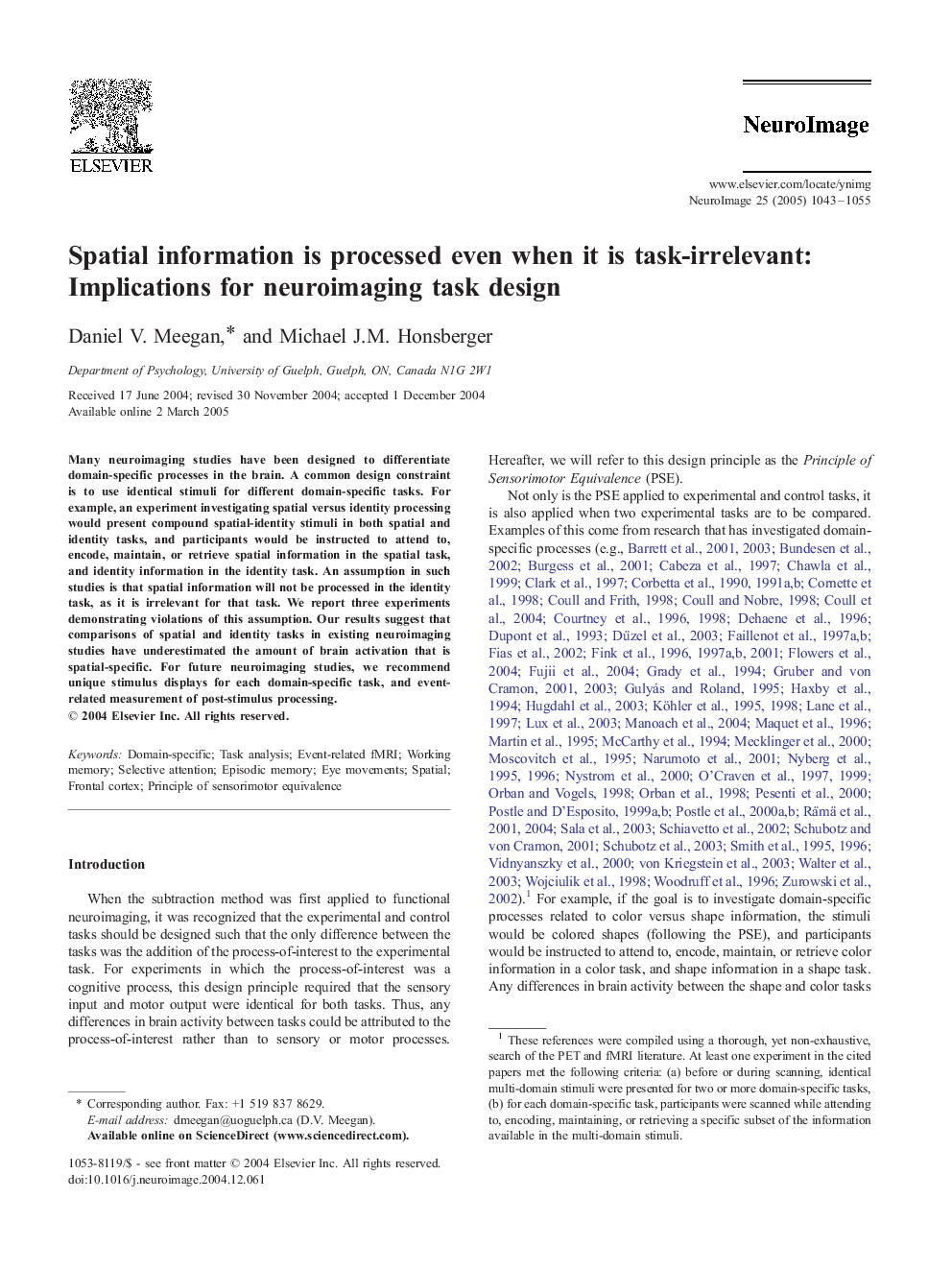| Article ID | Journal | Published Year | Pages | File Type |
|---|---|---|---|---|
| 9198034 | NeuroImage | 2005 | 13 Pages |
Abstract
Many neuroimaging studies have been designed to differentiate domain-specific processes in the brain. A common design constraint is to use identical stimuli for different domain-specific tasks. For example, an experiment investigating spatial versus identity processing would present compound spatial-identity stimuli in both spatial and identity tasks, and participants would be instructed to attend to, encode, maintain, or retrieve spatial information in the spatial task, and identity information in the identity task. An assumption in such studies is that spatial information will not be processed in the identity task, as it is irrelevant for that task. We report three experiments demonstrating violations of this assumption. Our results suggest that comparisons of spatial and identity tasks in existing neuroimaging studies have underestimated the amount of brain activation that is spatial-specific. For future neuroimaging studies, we recommend unique stimulus displays for each domain-specific task, and event-related measurement of post-stimulus processing.
Keywords
Related Topics
Life Sciences
Neuroscience
Cognitive Neuroscience
Authors
Daniel V. Meegan, Michael J.M. Honsberger,
